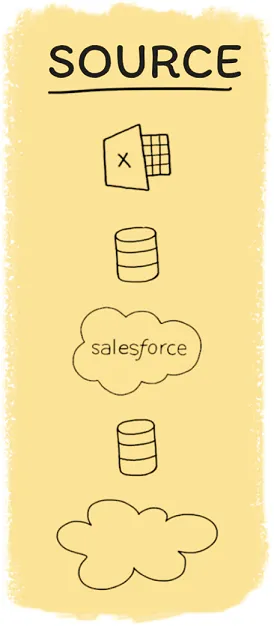
The Informed Company
How to Build Modern Agile Data Stacks that Drive Winning Insights
Dave Fowler, Matthew C. David
- English
- ePUB (mobile friendly)
- Available on iOS & Android
The Informed Company
How to Build Modern Agile Data Stacks that Drive Winning Insights
Dave Fowler, Matthew C. David
About This Book
Learn how to manage a modern data stack and get the most out of data in your organization!
Thanks to the emergence of new technologies and the explosion of data in recent years, we need new practices for managing and getting value out of data. In the modern, data driven competitive landscape the "best guess" approach—reading blog posts here and there and patching together data practices without any real visibility—is no longer going to hack it. The Informed Company provides definitive direction on how best to leverage the modern data stack, including cloud computing, columnar storage, cloud ETL tools, and cloud BI tools. You'll learn how to work with Agile methods and set up processes that's right for your company to use your data as a key weapon for your success... You'll discover best practices for every stage, from querying production databases at a small startup all the way to setting up data marts for different business lines of an enterprise.
In their work at Chartio, authors Fowler and David have learned that most businesspeople are almost completely self-taught when it comes to data. If they are using resources, those resources are outdated, so they're missing out on the latest cloud technologies and advances in data analytics. This book will firm up your understanding of data and bring you into the present with knowledge around what works and what doesn't.
- Discover the data stack strategies that are working for today's successful small, medium, and enterprise companies
- Learn the different Agile stages of data organization, and the right one for your team
- Learn how to maintain Data Lakes and Data Warehouses for effective, accessible data storage
- Gain the knowledge you need to architect Data Warehouses and Data Marts
- Understand your business's level of data sophistication and the steps you can take to get to "level up" your data
The Informed Company is the definitive data book for anyone who wants to work faster and more nimbly, armed with actionable decision-making data.
Frequently asked questions
STAGE 1
SOURCE
aka Siloed Data

Source Stage Overview
Chapter One
Starting with Source Data
- Database queries that generate customer acquisition metrics.
- A dashboard that displays monthly sales featuring a downloadable spreadsheet.
- A custom web application that allows searching of referral traffic.
Common Options for Analyzing Source Data
